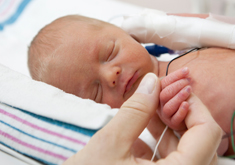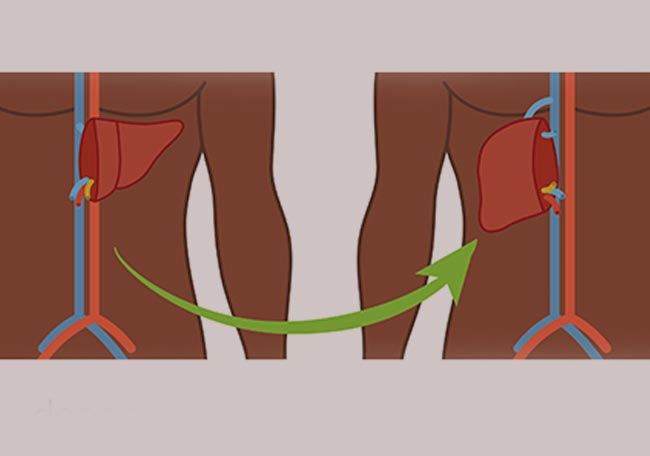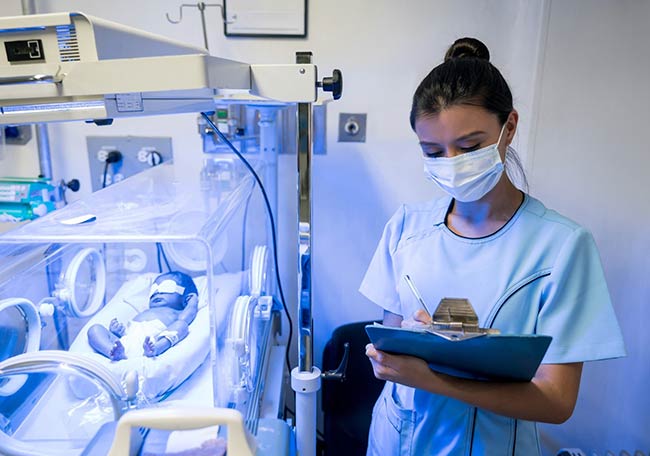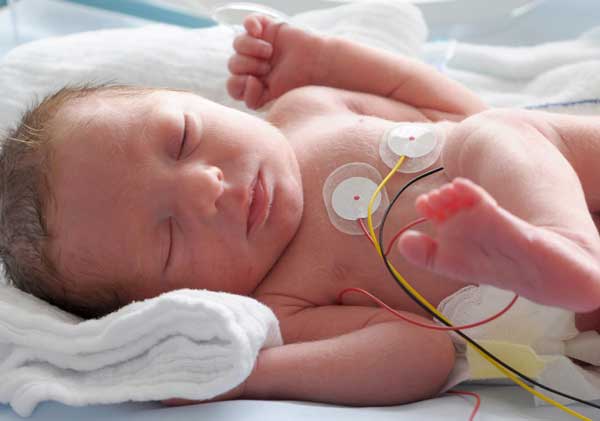Detección de la atresia biliar

1. Superina R, Magee JC, Brandt ML, et al; Childhood Liver Disease Research and Education Network. The anatomic pattern of biliary atresia identified at time of Kasai hepatoportoenterostomy and early postoperative clearance of jaundice are significant predictors of transplant-free survival. Ann Surg. 2011; 254(4):577–585
2. Dharnidharka VR, Tejani AH, Ho PL, Harmon WE. Post-transplant lymphoproliferative disorder in the United States: young Caucasian males are at highest risk. Am J Transplant. 2002; 2:993–998
3. Kelly DA. Strategies for optimizing immunosuppression in adolescent transplant recipients: a focus on liver transplantation. Paediatr Drugs. 2003; 5(3):177–183
4. Sokol RJ, Mack C, Narkewicz MR, Karrer FM. Pathogenesis and outcome of biliary atresia: current concepts. J Pediatr Gastroenterol Nutr. 2003; 37(1):4–21
5. Marchetti P. New-onset diabetes after liver transplantation: from pathogenesis to management. Liver Transpl. 2005; 11(6):612–620
6. Calonge N, Green NS, Rinaldo P, et al. Committee report: Method for evaluating conditions nominated for population based screening of newborns and children. Genet Med. 2010; 12:153–159
7. Kemper AR, Green NS, Calonge N, et al. Decision-making process for conditions nominated to the Recommended Uniform Screening Panel: statement of the US Department of Health and Human Services Secretary’s Advisory Committee on Heritable Disorders in Newborns and Children. Genet Med. 2014; 16:183–187
8. Perrin JM, Knapp AA, Browning MF, et al. An evidence development process for newborn screening. Genet Med. 2010; 12: 131–134
9. Chardot C. Biliary atresia. Orphanet J Rare Dis. 2006; 1:28
10. Pape L, Olsson K, Petersen C, von Wasilewski R, Melter M. Prognostic value of computerized quantification of liver fibrosis in children with biliary atresia. Liver Transpl. 2009; 15(8):876–882
11. Schwarz KB, Haber BH, Rosenthal P, et al; Childhood Liver Disease Research and Education Network. Extrahepatic anomalies in infants with biliary atresia: results of a large prospective North American multicenter study. Hepatology. 2013; 58(5):1724–1731
12. Powell JE, Keffler S, Kelly DA, Green A. Population screening for neonatal liver disease: potential for a community based programme. J Med Screen. 2003; 10(3):112–116
13. Harpavat S, Finegold MJ, Karpen SJ. Patients with biliary atresia have elevated direct/conjugated bilirubin levels shortly after birth. Pediatrics. 2011; 128(6). Available at: www.pediatrics.org/cgi/content/full/128/6/e1428
14. Chen SM, Chang MH, Du JC, et al; Taiwan Infant Stool Color Card Study Group. Screening for biliary atresia by infant stool color card in Taiwan. Pediatrics. 2006; 117(4):1147–1154
15. Lien TH, Chang MH, Wu JF, et al; Taiwan Infant Stool Color Card Study Group. Effects of the infant stool color card screening program on 5-year outcome of biliary atresia in Taiwan. Hepatology. 2011; 53(1):202–208
16. Ramonet M. Stool color cards for screening for biliary atresia. BA Single Topic Conference. Bethesda, MD: National Institutes of Health 2006; September 12–13
17. Wildhaber BE, Majno P, Mayr J, et al. Biliary atresia: Swiss national study, 1994-2004. J Pediatr Gastroenterol Nutr. 2008; 46(3):299–307
18. Gu YH, Yokoyama K, Mizuta K, et al. Stool color card screening for early detection of biliary atresia and longterm native liver survival: a 19-year cohort study in Japan. J Pediatr. 2015; 166(4):897–902.e1
19. Kim S, Kang Y, Lee MJ, Kim MJ, Han SJ, Koh H. Points to be considered when applying FibroScan S probe in children with biliary atresia. J Pediatr Gastroenterol Nutr. 2014; 59(5):624–628
20. Ohi R, Nio M, Chiba T, Endo N, Goto M, Ibrahim M. Long-term follow-up after surgery for patients with biliary atresia. J Pediatr Surg. 1990; 25(4):442–445
21. Serinet MO, Wildhaber BE, Broué P, et al. Impact of age at Kasai operation on its results in late childhood and adolescence: a rational basis for biliary atresia screening. Pediatrics. 2009; 123(5):1280–1286
22. Caudle SE, Katzenstein JM, Karpen SJ, McLin VA. Language and motor skills are impaired in infants with biliary atresia before transplantation. J Pediatr. 2010; 156:936–940, 940.e1
23. DeRusso PA, Ye W, Shepherd R, et al; Biliary Atresia Research Consortium. Growth failure and outcomes in infants with biliary atresia: a report from the Biliary Atresia Research Consortium. Hepatology. 2007; 46(5):1632–1638
24. Lee JY, Lim LT, Quak SH, Prabhakaran K, Aw M. Cholangitis in children with biliary atresia: health-care resource utilisation. J Paediatr Child Health. 2014; 50(3):196–201
25. Ng VL, Haber BH, Magee JC, et al. Medical status of 219 children with biliary atresia surviving long-term with their native livers: results from a North American multicenter consortium. J Pediatr. 2014; 165:539–546.e2
26. Mogul D, Zhou M, Intihar P, Schwarz K, Frick K. Cost-effective analysis of screening for biliary atresia with the stool color card. J Pediatr Gastroenterol Nutr. 2015; 60(1):91–98
27. Schreiber RA, Masucci L, Kaczorowski J, et al. Home-based screening for biliary atresia using infant stool colour cards: a large-scale prospective cohort study and cost-effectiveness analysis. J Med Screen. 2014; 21(3):126–132
Comentarios
Para ver los comentarios de sus colegas o para expresar su opinión debe ingresar con su cuenta de IntraMed.











